9 Easy Practices to Increase Revenue with Website Organic Traffic
What has been updated from the old blog post: Four practices have been added to the existing practices relevant to today’s digital time to increase revenue with organic traffic.
Summary: This comprehensive guide delves into nine potent strategies to increase organic traffic and boost your earnings in 2023 and beyond. It covers creating quality content, utilizing podcasts, infographics, and social media, along with competitive analysis, monetization techniques, and selling your own products. Each method contributes to building trust with your audience and growing your revenue, making your website a thriving hub for generating income.
With over two billion websites online, getting organic traffic is harder than ever before and is only getting increasingly competitive.
Organic traffic refers to the visitors who find your website through search engines like Google, without the use of paid advertising. It’s a valuable source of potential customers who are actively searching for products or services that your business offers. To harness the power of organic traffic and boost your website’s revenue, it’s essential to employ effective strategies.
Let’s look at nine easy practices that can help you increase revenue through organic traffic to your website. Whether you’re a small business owner, a marketer, or an entrepreneur, these techniques will provide valuable insights into optimizing your online presence and converting visitors into paying customers.
1. Create content for humans, not search engines
Most content creators tend to think that the more content they publish, the more search engines will push their content to rank.
But it’s quite the contrary. According to Search Engine Journal, more irrelevant content can actually hurt your website.
Every post or article you publish online should provide sufficient information to the readers. As the new update from Google says, only helpful content gets ranked. If readers are coming to your website and spending time going through your content, and engaging with it, algorithms consider it as a ranking factor.
Rather than focusing on the number of posts you publish, aim for consistency by publishing a post once or twice a week. Take your time to actually write a good blog post and use a proofing tool to make sure it is readable, helpful, and interactive.
Being a digital writer for years, one of my favorite strategies for creating better content is leveraging current news. For example, check out this post Coronavirus impact on eCommerce, and pet food sales data:
By tapping into the current news cycle, this content is both impactful currently, and a source of future evergreen data.
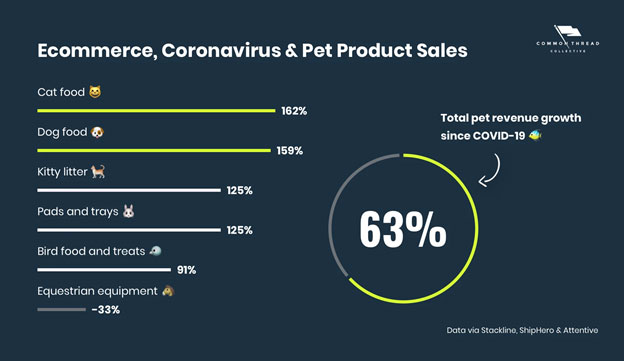
Image Source: commonthreadco
Once you’re done writing, go above and beyond by adding custom images, charts, and data to boost the user experience and increase dwell time.
For instance, take a look at this sleep health blog that I love. Zoma consistently uses custom images:

And tables with data to improve skimming, too:
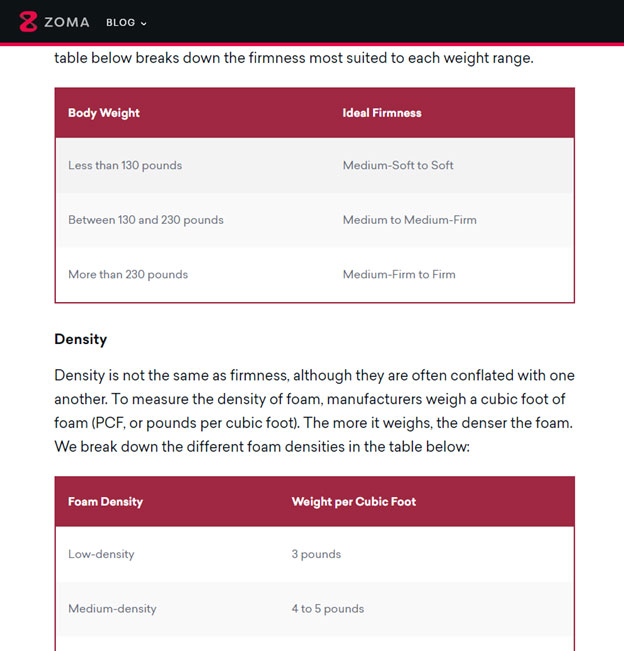
That’s a win-win!
I know what you are thinking: Can this strategy be adapted for already existing content? Maybe content that is good, but not great?
Absolutely.
SEO expert Adam from Loganix shares:
“On-site SEO factors like pagespeed optimization, fresh content additions, or partial rewrites and updates can dramatically improve the impact of your content, and it’s far cheaper than actually creating new blog posts, too.”
A compelling new blog post (or refreshed old one!) will make your new web visitors come back to read more posts on your site while ideally moving through your funnel. Assuming you have one in place.
Over time, your content will help you to build trust with your audience. If you’re lucky, they might also share your posts with their network friends, who could also be potential customers down the line.
Additional Read: Improve Webpage Speed
2. Start a podcast
A podcast helps you tap into a new audience that you wouldn’t reach through starting a new blog alone. Remember, people consume content in different ways. Podcasts tend to attract those who want to listen during their commute to work, for example.
Your podcast will help you build a personal connection with your listeners who will be curious and naturally want to know more about you by visiting your website.
Did you know that the projected revenue in the Music, Radio, and podcast market in India is expected to reach US$1,720.00m in 2023?
That’s a lot of listeners and potential leads for your business!
To succeed with podcasts, you need to establish yourself as an authority, and then build an audience.
Start by interviewing influencers in your niche and appearing as a guest on other podcasts. Simply start emailing.
You’d be surprised at how many people are looking for podcast guests! Just email your targets a calendar scheduling link, get them on the phone, and land your interviews.
Once you start hosting your shows, be sure to submit your podcast to Spotify so that your listeners have an easy time finding you.
Also don’t forget when you submit your podcast to include relevant links to content and landing pages in your transcript and show notes to help drive your listeners back to your website.
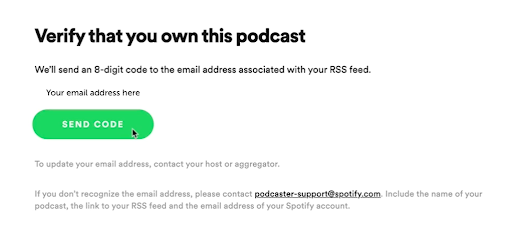
Image Source: Spotify
This is key if you want to bring listeners into your funnel and be able to monetize your podcast without running ads.
If you can’t tell already, creating a podcast is one of the best ways to reach new markets and drive organic traffic.
To really get the most out of it, try repurposing your content from your blog posts into a podcast episode, and vice versa.
You can truly do this with any niche and topic. For example, if you wrote a blog post on the best cities for digital nomads, you could easily take that content and repurpose it into a podcast episode.
With this example, you could really expand on the content itself by interviewing people who have lived in the cities discussed in the post and provide even more insight than a blog can go alone.
There’s truly no need to come up with fresh content for both your blog and podcast. Instead, repurpose content and have an intentional content calendar to ensure your content gets seen or heard across all mediums. This is what I call working smarter and not harder!
3. Link Building through Infographics
After creating compelling content that ranks in the search engine results, you need to continue building your domain authority through inbound links. A better domain authority means that your web pages rank better than your competitors in your niche, leading to more traffic.
Infographics can help you get inbound links from authoritative websites at scale. They bring data to life through enticing color combinations, icons, graphs, and charts. That’s why they still influence people’s behavior more than words will ever do.
Plus, any of your readers who are visual learners will certainly appreciate your efforts.
Another great infographic example is this SD-WAN buyers guide from GetVoip:
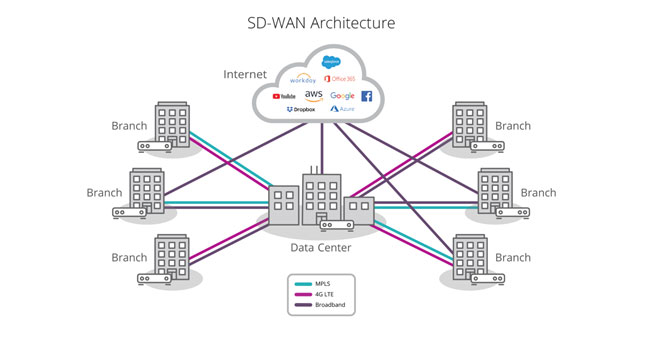
Image Source: getvoip.com
I especially love this one because let’s be honest, explaining SD-WAN is not the easiest feat in the world…
Especially when you’re dealing with a CEO or CFO as the decision maker and they’ve probably never even heard of SD-WAN… All they know is they need their internet to work and their data secure. On the other hand, someone in the tech department would be familiar with this technology.
So how would you break it down to them? Normally, with visuals… Right?
Do this same thing on your blog and website? This will greatly benefit your audience and your chances of ranking and getting backlinks.
Ready to create your own infographics? Here’s how to go about it:
- Identify an authoritative site that you’d want to get inbound links from.
- Identify a topic that will appeal to both your audience and that site’s audience.
- Using templates from Canva, create an attractive infographic.
- Share it with the site’s owner (or whoever is in charge of content) to post it on their website then request for a link pointing back to your website.
- Do the same for other sites and see your ranking improve due to increased domain authority
4. Have long-tail landing pages
Once a searcher is ready to buy a product, they will use precise phrases with three to four keywords, reflecting the product or service they are looking for.
As compared to informational keywords, long-tail keywords are not competitive. As you try to rank the content you create, identify the keywords your audience uses when looking for a product or service they need.
If you’re not quite sure where your own page stacks up, you can run a website analysis to perform an SEO audit and gauge website traffic to see if your keywords are working for you or not.
Try building websites or landing pages with relevant long-tail keywords and copy that speaks to their needs. This will convert more visitors who are ready to buy the products you promote.
For example, Energy Seek targets different industries and has specific landing pages for each audience segment to boost conversions in each visit:
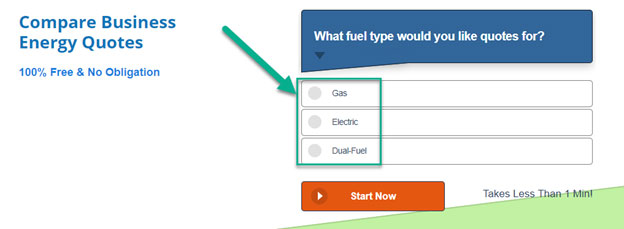
Let’s say you’re a data collection tool like Forms on Fire and you offer multiple different services but for the same target market.
It would make sense to have a dedicated landing page for each unique offer, right? Typically, the best strategy with landing pages is to keep things direct and with little distractions.
The last thing you want to do is have a landing page with multiple different offers and too many options that confuse and overwhelm the buyer.
Here is a perfect example of how you could segment your different offers. Take a look at Forms on Fire’s landing page for their mobile form app for small businesses:
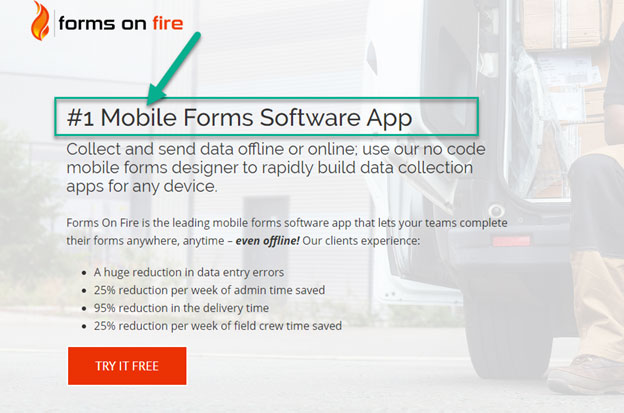
Instead of just assuming that all of their traffic needs mobile forms, they created a new, segmented landing page describing the benefits of mobile forms, without complicating their existing offering.
The point here is that you don’t have to overcomplicate it or spend thousands having multiple different landing pages designed. You can literally use the same template and just change up the offer or target!
Just make sure you use a CRM to boost conversions because after you implement these tips, you’re going to be flooded with leads!
5. Use Search Behaviour as a Keyword Strategy
Search behavior has really changed over the years, keeping in step with how search engines have evolved. Nowadays, people are pretty savvy when it comes to searching online.
They tend to use more natural, everyday language when looking for stuff. Instead of typing something short like “damaged hair treatment,” they’re more likely to ask a question like “How can I fix my damaged hair at home.”
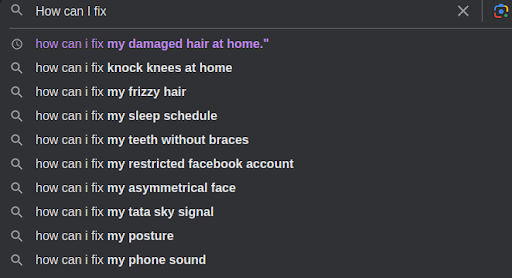
So, if your SEO game has always been about those short, snappy keywords, it’s time to shake things up. As mentioned in the above point, it’s all about embracing long-tail keywords (LTKW) if you want to rev up your web traffic. And hey, it’ll also help your site perform better in voice searches, which were a whopping 30% of all searches back in 2020.
With the rising popularity of voice-activated search tools like Siri, Alexa, and Google Assistant, optimizing for voice search is no longer an option; it’s a necessity. When someone asks their smart device a question, it’s often in the form of a natural, spoken sentence or phrase, not just a keyword. By incorporating long-tail keywords into your website content, you make it more likely that your website will provide the answers and information that these voice-activated tools are looking for. In essence, it’s about being in sync with the changing landscape of online search behavior and ensuring your content caters to both typed and spoken inquiries.
6. Try Guest Posting
How exactly do guest posts and backlinks give your website’s traffic a boost? Well, guest posting is like this cool deal where you create content for another website, and in return, they hook you up with a link back to your site. It’s like a little traffic-boosting trade!
But here’s the magic part: when that link is in place, your website gets a bit of that site’s ranking power. It’s like borrowing some street cred. This boost elevates your domain authority (DA), and that’s the secret sauce to climbing the search engine result ranks. The higher you go in those results, the more organic traffic you attract.
Now, guest blogging isn’t just about traffic; it’s a whole bag of goodies. It’s like shouting, “Hey world, check out my brand!” because it broadens your brand’s recognition. Plus, it’s like a referral traffic party because you’re getting in front of a brand-new audience.
But hold on, why don’t more folks jump on this guest posting train? Well, one of the hurdles is finding websites that are down for some guest post action.
To make the process easier, follow these steps:
1. First, go hunting for websites that match your business niche and see if they’re up for guest posts. Let’s say you’re all about beauty products; type in “beauty write for us” in Google and see what pops up.
2. Once you’ve got a bunch of potential websites, it’s time to do a little DA detective work. Check out their domain authority. Sites with DAs under 20 might not move the traffic needle much, while those over 70 usually hang with the big names. The sweet spot usually falls between DAs of 21 and 69.
3. Now, to seal the deal, reach out with a pitch. But before you hit send, do a little homework on the website owner or editor. This personal touch increases your chances of getting a thumbs-up.

There you have it, the lowdown on how guest posts and backlinks can give your website’s traffic a serious boost!
7. Competitive analysis as a research tool
Another nifty trick to boost your website traffic and make that revenue grow – is competitive analysis. It’s like spying on your competition but for all the right reasons!
So, here’s the deal: when you check out what your competitors are up to, you can uncover some golden opportunities. One of those is finding gaps in your own content game. If you see topics or areas that your rivals haven’t tackled or didn’t dive into deeply, that’s your cue to shine.
You can create awesome content that covers those gaps, and here’s why it’s a game-changer. When you do this, you’re not only attracting more visitors who are curious about those unique topics, but you’re also establishing yourself as a real pro in your field. You become the go-to source for information in your niche.
So, remember, peeking at what the competition is doing isn’t just about curiosity; it’s a smart strategy to stand out, draw in more visitors, and boost your website’s authority and revenue. Go ahead and make that competitive analysis work for you!
8. Monetization
There’s no definite number stating how much traffic you should be getting or how big your audience needs to be before monetizing your blog. However, there are two factors you need to consider:
A consistent amount of traffic to your blog and
A sizable email list, so you can begin to monetize your blog by sending personalized emails with your offers.
A consistent amount of traffic and a sizable email list are ambiguous. If you’re focused on building an email list, then you know how important it is to measure email metrics like open rates, click-through rates, and conversion rates.
Why? You can always improve upon these for better results and more revenue through A/B testing email greetings, scheduling times, and more.
But can we put an exact figure on each of these terms? No. Your income goals will determine that.
If, for instance, you want to make $10,000 from your blog, you can promote a product worth $100 to 100 people or a product worth $25 to 400 people.
How to calculate revenue:
Revenue from Organic Search = Traffic x Sales Conversion Rate x Average Order Value
Traffic = Search Impressions x Click-through Rate
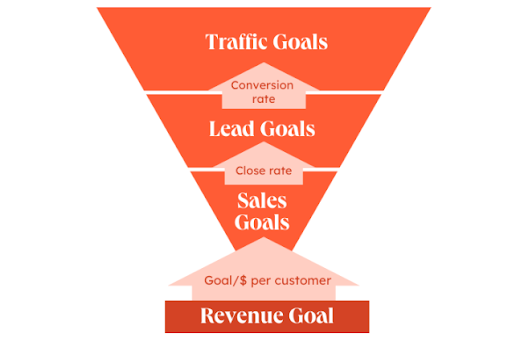
Image Source: Hubspot
9. Sell your own products or services
Hey, here’s a winning idea to turbocharge your website traffic and rake in some serious cash – sell your own products or services right on your site!
Let me break it down for you. When you offer your own stuff, whether it’s awesome products or kick-butt services, you’re not just waiting around for people to visit your site. You’re giving them a reason to come, stay, and shop. And that’s the name of the game.
Think about it like this: imagine you’re running an e-commerce website, selling trendy fashion gear. You’re not just waiting for fashionistas to stumble upon your site; you’re tempting them with the latest styles, those must-have accessories, and more. Shoppers will flock to your site to grab those goodies.
Additional Read: Ecommerce SEO Checklist
And the best part? Selling your own products or services not only boosts traffic but can seriously pad your wallet. You’re not just relying on ads or other people’s products; you’re pocketing the profits.
So, whether you’re selling fashionable threads, handcrafted jewelry, digital services, or anything else, having your own offerings on your website is like opening your own little shop in the big online marketplace. It’s a win-win – more visitors and more revenue. So, why wait? Start selling your own stuff and watch your website thrive!
I know it’s easier said than done. To help you out on your ecommerce journey, check out this step-by-step guide to advertise your products or services online.

Image Source: The Bottom Line
I know I just gave you a lot of information. Try not to get bogged down with all the different tasks, though.
It’s important to focus on the main drivers for you because, on their own, these ideas won’t drive organic traffic to your website. The truth is, that getting massive amounts of traffic to your website will take time because your readers won’t trust you in the first, second, or third encounter.
Patience and consistency will separate you from every other new publisher out there who dreams of making thousands of dollars through affiliate marketing. Not to mention, by providing your audience with valuable content, you increase the odds of a customer referring you to a friend.
With this in mind, start implementing these ideas one by one. Gradually, you’ll start seeing an increase in the traffic you get. Eventually, you will earn your audience’s trust and loyalty, which will eventually convert to making bank-in affiliate sales.
Ready to skyrocket your revenue? Contact Techmagnate today and unlock the power of organic traffic.
Contributor
Adam Enfroy writes about how to scale your blog like a startup to 400,000 monthly readers at www.adamenfroy.com. He launched his blog in 2019 and is now generating over $70,000/month in revenue. He wants to teach new bloggers how to start a blog and do the same. You can follow him on Facebook, X (Twitter), on Instagram.